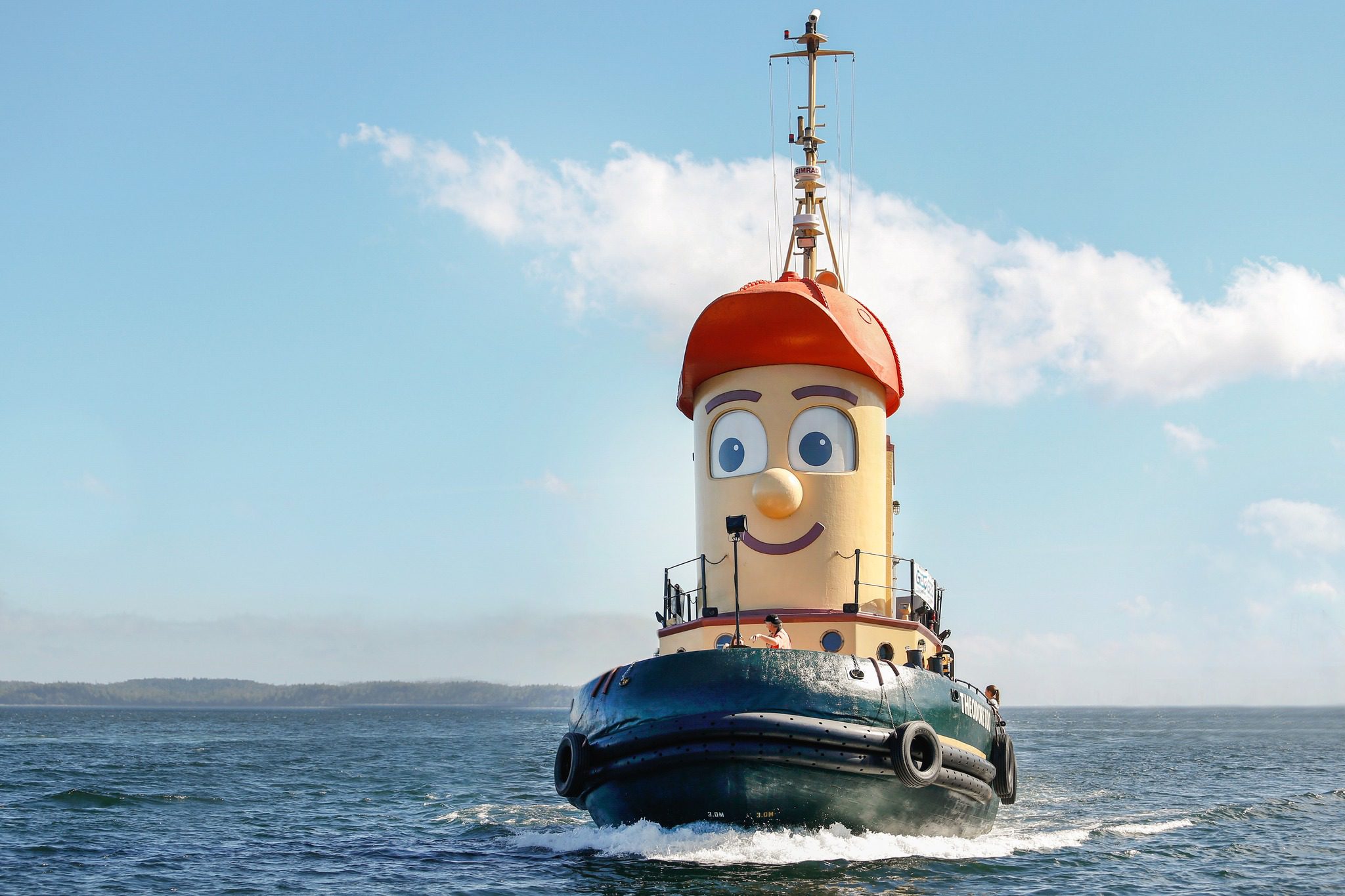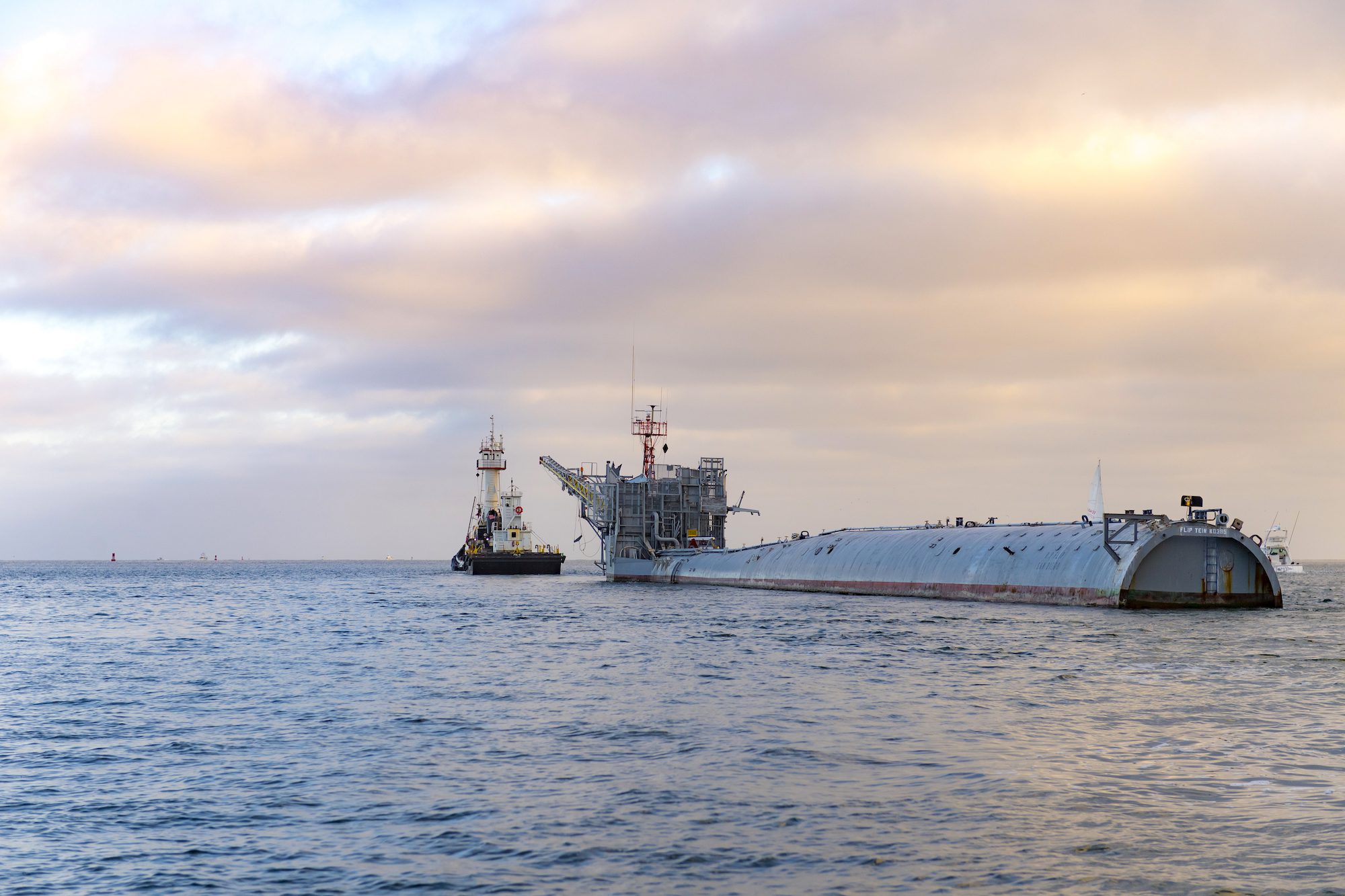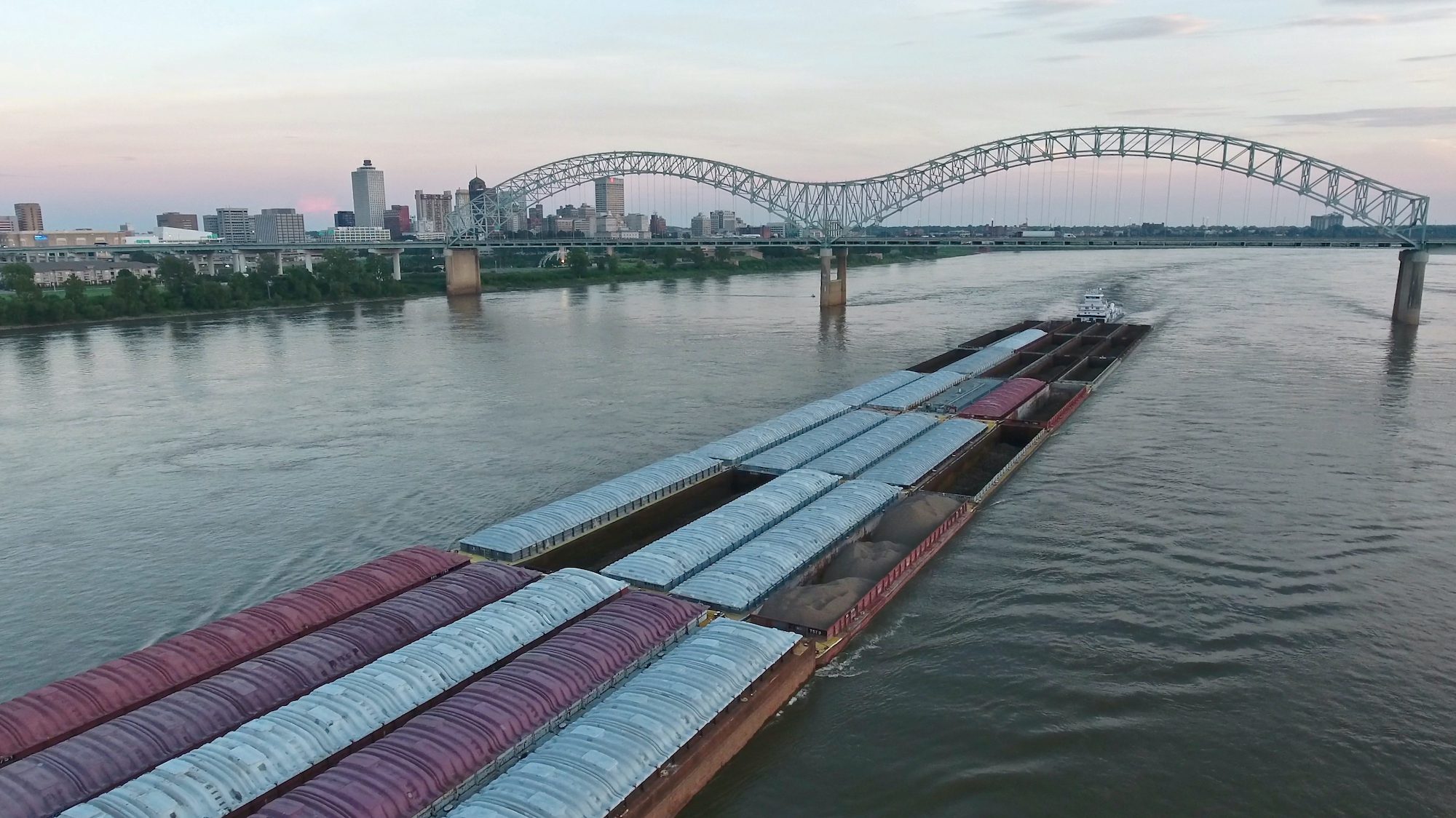 The GPS was set on anchor watch, range and bearings were calculated on the radar, and a pair of landmarks around Mobile Bay had been sighted on the gyro repeater. It was my first time anchoring a large drillship, and my precise location was all I knew with complete certainty.
The GPS was set on anchor watch, range and bearings were calculated on the radar, and a pair of landmarks around Mobile Bay had been sighted on the gyro repeater. It was my first time anchoring a large drillship, and my precise location was all I knew with complete certainty.
Drillships are constructed around generic hull designs. The modern drillship is essentially a super-tanker hull with a hole cut out of the middle and a derrick placed on top. This is an oversimplification of course, but the fact remains that many ships are constructed on generic hull designs with specialized packages fitted into, or in the case of drillships, on top of, the hull. This normally works out ok, but with a 200 foot + steel cage (derrick) mounted to the deck, a considerable amount of sail area exists for the wind to exert force on the anchor… and generic anchor sized for the generic hull.
As I settled into anchor watch the Captain went to bed and, unknown to me, the engineer on duty decided to take a break.
Then the wind picked up.
Soon the ship was picking up speed, dragging it’s anchor along the seafloor of Mobile Bay. I quickly woke the Captain and the Bosun and began trying to locate the engineer to put power on the prop but… only the Bosun seemed to worried. How could we be dragging with a scope of chain 4 times the water-depth?
The story ended with little excitement, we simply powered into the wind and laid out more chain, no damage was done but each new week brings us news of ships running aground, dragging their anchors into subsea cables or drifting into eachother in, seemingly, calm water.
Why?
The simple answer is that a ship’s single best near-shore safety tool is often underutilized and not very well understood.
[pullquote style=”1″]”A ship’s single best near-shore safety tool is often underutilized!”[/pullquote]The latest drillships have solved the sail area problem with enormous anchors fitted to massive chain but have done so at the expense of redundancy. Samsung’s latest drillship design includes only one anchor eliminating redundancy and the extra safety factor a second anchor provides. What is disconcerting about this design is not just the risk of failure – if one anchor is damaged you don’t have a spare ready for immediate use – but also the additional holding strength and capabilities a second anchor provides. In their defense, the shipyards have recognized a simple fact… very few mariners use both anchors.
The problem with two anchors is they can easily be tangled, just one 360 degree swing at anchor will twist them up good, and it takes extra time to retrieve a second anchor – shipping today is, if anything, a race against the clock – but their advantage is considerable if used properly. Here are some ideas how:
Alternating Anchors – We all have a favorite side. Most of us are right handed and scientists have proven that all of us favor use one side of our brains more than the other, but there is no need to favor one anchor. Many captains favor the use of either the port or starboard anchor but unused gear get’s rusty and breaks easily which is why it’s important to alternate anchors. And it’s a well know fact that if we are not sure something is going to work… we are less likely to use it. The only way to know that both anchors are fit and ready to use is to use them. So if you dropped the starboard anchor in the last port be sure to use the port anchor next time!
Maneuvering With Two Anchors – The one thing I enjoyed most about sailing aboard a training ship is the time we had to try new things and during my senior cruise at SUNY Maritime we did just that one afternoon by mooring in a fast current with the help of a second anchor. The exercise was simple… we prepared both anchors but dropped one down to two-times the water depth and left the second in the hawsepipe. At 2x the water depth there was not enough chain out to let the anchor catch hold of the bottom but plenty to slow down the vessel and help her turn into the current allowing us to deploy and set the other anchor. We could have continued paying out chain to the first anchor – and set her properly – but this was an exercise in using our equipment to the fullest and learning the vessel’s capabilities. An exercise that proved successful.
The Sin Of Going Aground – Groundings happen, they happen to poor captains and sometimes good ones as well. Sometimes the cause is mechanical failure and other times it’s an insidious compilation of events – often, depending on speed and bottom conditions – there is not significant damage to the ship, but too often groundings result in massive damage and injury to personnel. Numerous errors are generally in play when a ship runs aground, but an alarming statistic is how often these incidents happen with one or both anchors in the hawsepipe. If you are drifting toward a rocky shore…. drop an anchor! If your anchor is dragging, lay out more chain and if that doesn’t work drop the 2nd anchor! Yes, the sin of grounding is letting it happen with an anchor in the hawespipe.
Scopes, Angles and Vigilance – The fear of using two anchors is they will get tangled up. While this is of legitimate concern, there are solutions to this problem. The most basic solution is to run anchors at wide angels and different scopes. By setting them 90 degrees apart (or more) you minimize the risk of bad entanglements but you can also set them on different scopes. In a crowded Anchorage, for example, you may not be able to get a full 5 to 7x (the water depth) scope but you can run one anchor at 4x and another at 2x. You can also monitor the current and pick up the “short” anchor just prior to the current change and set it down again after the ship has swung. The key to preventing entanglement is vigilance… don’t just “set-and-forget” your second anchor… actively monitor and correct for any problems when they happen.
Stern Anchor – I have deployed stern anchors countless times… on boats.. but, admittedly I have little experience with stern anchors on large ships but I do know that setting a stern anchor can have dramatic effect on holding your position in shifting current, and thus, can prevent entanglement of your primary anchors. This may be of little use to most ships but, the next time you are asked to take an unfamiliar mooring in a tight channel consider taking it from the stern…. after deploying one (or more) anchors off the bow.
Storm Management – Too often when outrunning a storm, ships – particularly small ones that run between islands – find harbors in which to hide from storms. But when a storm changes direction or simply increases in force, these ships find themselves in a difficult position. In this case your only option might be to set a second anchor, followed by a third, followed by passing extra lines to shore and securing them to solid objects. As one Captain told me “If I was in that situation I’d run every line I could find ashore…. including my shoe laces.”
Cut And Run – Anchors and chain sink to the bottom – this is bouyancy 101 at it’s most basic – but that doesn’t mean you can’t cut and run. The problem: Few companies are going to smile about the salvage costs of a lost anchor and chain.
Considering that the primary cost of anchor recovery is finding and floating the anchor, why not fix a fender to mark the end of the anchor chain? If the detachable links on your chain have been well maintained and you can tie the end of the chain off to large fender or float… it’s possible to return and recover your anchor after the danger (drifting towards shore) is over. And if you have a second anchor, you’re still in pretty good shape.
And…
What other uses exist for more than one anchor? Please leave your thoughts as a comment below.

 Join The Club
Join The Club











